- Home
- Newt Gingrich
Understanding Trump Page 6
Understanding Trump Read online
Page 6
Being a businessman, Trump understands branding better than most people in the world—and definitely better than his sixteen Republican primary opponents did. Trump’s first big success was taking out Jeb Bush, and he did it entirely by giving him a brand. Jeb had huge amounts of money. He had all of his father’s and brother’s network. He had the natural bias of the elite media. He was considered the de facto Republican nominee before the primaries even started.
So how did Trump take out Jeb Bush? He called him “low energy.” Jeb is a good friend of mine, and he was a very accomplished governor who enacted real reform. But thanks to Jeb’s laid-back manner, the description stuck to him like glue. (Remember how closely Trump observed all his primary opponents.)
Trump kept it up over the course of the primary. It became a fact by repetition.
It got to a point where Trump got inside Jeb’s head and Jeb was literally running around in New Hampshire, so people could see he was not low energy. But by that time, Trump had so completely dominated media coverage of the race, and had so constantly repeated the “low energy” brand he’d made for Jeb, that there was nothing Jeb could do. Once Jeb was no longer a direct threat, Trump moved on to his other opponents—Little Marco and Lyin’ Ted. He used the same strategy, and it worked. Trump feeds success, so by the time the general election came, Hillary Clinton became Crooked Hillary.
But Trump didn’t use branding only against his opponents, he used it to sell his message and his candidacy. Think about the red hats. Dilbert’s creator, Scott Adams, pointed this out in his blog—which I read regularly. Any conventional politician running a campaign would have put his or her name on the hats. Trump didn’t. He knew people already knew his name. Trump was associated with high-end hotels and expensive real estate. He knew that was not the brand he needed to win the trust and support of middle-class Americans. He also knew that patriotism was the core American value that unites us as a people. So his hats said “Make America Great Again.” That phrase took hold, striking a chord with a huge swath of the country, and expressed the core of Trump’s campaign perfectly. It wasn’t about Donald J. Trump, it was about making America great. That’s what effective brands do.
But part of Trump’s challenge is protecting his own brand.
The Left, the establishment, and the media don’t, can’t, or won’t understand Trump, so they spread fictions. One of the most dishonest has been the repeated accusations that Trump, even now that he has removed himself from his business, is profiting from being president.
After spending a significant amount of time with Trump before and during the election, I can see clearly that Trump is doing this only for the good of the American people. He’s a multibillionaire. His life would have been much easier, much less stressful, and much more lucrative had he stayed in business and out of the political arena.
This being said, Trump and his team will need to combat this narrative from the Left very aggressively, because it could significantly undercut his appeal to the millions of Americans sick of crony capitalism and insider deals who elected him.
ALWAYS ON OFFENSE
Trump’s military-like doctrine of maneuvering and constant assessment also means Trump is always on the offensive. No matter what happened in the campaign, you never saw Trump making excuses or explaining himself. If he got into a tough spot, he immediately started attacking in another direction.
I explained it this way in a speech at the National Defense University after the election: If you look at the Army of Northern Virginia, which was the main Confederate battle force in the American Civil War, and the Israeli army, you’ll see that they have the same doctrine. If you are surprised, one-third of your forces go into defense, two-thirds go on counterattack. You never give up the initiative. That’s perfectly Trumpian. Trump’s core model is, you hit me, I hit back, and I hit harder than you hit me. He learned this tactic as a businessman battling with the New York media. If one of the New York media outlets wrote a critical story, Trump responded bluntly and immediately to ensure he was in the next edition. He was always attacking, always involved, always at the center of attention.
He applied the same principle to politics. When one of his primary opponents or a pundit attacked him in a news article or a TV interview, Trump let no slight go unanswered. And his opponents learned quickly that if they decided to take on Trump, they would need to be ready to go twelve rounds. None of them were, and that’s part of the reason Trump won.
During the heat of the primary season, Bill O’Reilly asked me one night why the other Republican candidates weren’t attacking Trump. Bill rightly pointed out that Trump was clearly the front-runner, and the other candidates needed to attack him if they had any chance of winning. I explained to him that they were all afraid. Donald Trump is the grizzly bear in The Revenant. If you get his attention, he will wake up, walk over, bite your face off, and sit on you. The other candidates watched him do that to their competition and decided they’d rather let the bear eat someone else.
Trump’s military-like “always on offense” doctrine may explain why the men and women of the armed forces supported him three to one over Hillary Clinton.1 They recognized that he would make a strong commander in chief—especially against the particularly brutal forces that threaten the United States.
Now, Trump’s practice of always being on the offense and always pushing the system to accommodate him does have its downsides. Look at the way Trump announced the ninety-day travel ban from certain countries during his first month in office. Without giving the media—or even many people in his administration—much lead time, Trump held a press conference and signed an executive order implementing the ban over a weekend. I think if he had waited four to five days, thought it through, talked with staff, and fully explained it to the press and the public, the announcement and the ban would have been more understood and better received. This is exactly the approach he took for the revised travel ban, which drew much less public criticism, even if it is still encountering legal challenges.
But Trump has an enormous agenda—trade, border security, defeating radical Islam, deregulation, and more. If he takes the conventional, cautious Washington approach to everything he is trying to do, he’ll complete about 10 percent of his goals.
That’s not how Trump does anything. So, he’s rushing the system every day. He’s trying to hit Washington in five, six, seven different directions. He signed the travel ban, then his order to end sanctuary cities, then his order to speed up EPA reviews on important infrastructure projects, then his order to approve the Keystone XL and Dakota Access pipelines. This caused all the various parts of the Left to run in different directions. Sure, the travel bans have been stopped by the courts—for now—but few of his other orders have been halted.
I tell everybody who works for me that I much prefer errors of commission rather than errors of omission. When in doubt, do something. But keep moving. Trump has a similar bias. He criticizes mistakes but he very seldom fires people over them.
The great challenge of those in the Trump-Pence administration is to get up every morning and remember that they are not here to accommodate Washington, they are here to kick over the table. They will need to continue to push the system until it changes to fit their goals.
AHEAD OF SCHEDULE, UNDER BUDGET
Another part of Trump’s doctrine, which is in some ways driven by his desire to move quickly, is to set a goal of being “ahead of schedule, under budget.” This was critical to his business as a real estate developer, because delays cost money.
One of the best illustrations of Trump’s ability to keep productivity high and costs low is a story from his book, The Art of the Deal.
New York City has a skating rink in Central Park called Wollman Rink, and it had a problem in 1980—it was no longer making ice. The City of New York undertook a project to fix the skating rink. After six years and $13 million in wasted taxpayer money, the rink was still not making ice.
Trump had a t
own house that had a view of the Wollman Rink, and he got sick of looking at the iceless skating rink. So he got into a print war with then-mayor Ed Koch. Trump started writing letters to the editors of various newspapers in New York calling out Koch and the city for failing to fix Wollman Rink. Trump had a keen insight for how to get the city’s attention, as he wrote in The Art of the Deal:
If there’s one thing I’ve learned from dealing with politicians over the years, it’s that the only thing guaranteed to force them into action is the press–or more specifically, fear of the press. You can apply all kinds of pressure, make all sorts of pleas and threats, contribute large sums of money to their campaigns, and generally it gets you nothing. But raise the possibility of bad press, even in an obscure publication, and most politicians will jump. Bad press translates into potential lost votes, and if a politician loses enough votes, he won’t get reelected. If that happens, he might have to go out and take a nine to five job. That’s the last thing most politicians want to do.
Mayor Koch got so tired of Trump’s attacks in the news media he finally challenged Trump to fix the rink himself. The mayor turned the rink over to him, and gave him six months and $3 million to fix it.
Trump knew he had to deliver, because he had made such a fuss in the paper. He wrote about having to pack his bags and move to Argentina if he ended up one dollar over budget or one day late, because Koch and the rest of the city would never let him live down the failure to fix the rink after all he had said.
The next thing Trump wrote in the book is one of the key things that made me fascinated with him and motivated me to write this book. He acknowledged that he didn’t know anything about building skating rinks—despite having been fully engaged in a public haranguing of the mayor over Wollman Rink.
So Trump decided he needed to talk with someone who was an expert at building skating rinks, which naturally made him think of Canada. In his book he wrote, “Ice skating is to Canadians what baseball is to Americans, the national pastime. The top builders I figured were probably the companies that built rinks for Canada’s professional hockey teams.”
Ultimately, he got in touch with a Toronto-based company that had built the rink for the Montreal Canadiens hockey team. Trump got a crash course in what it takes to build a quality skating rink, then he had some people from the company fly down to look at Wollman Rink with him. It must have been the first time anyone who actually knew how to build an ice rink had looked at Wollman Rink. Within three months, at a cost of $2.25 million, the rink was open for business. It’s still there and still making ice—and it is now called the Trump Wollman Rink in Central Park.
I love this story because it shows that Trump is a pragmatic, sensible conservative who knows how to finish difficult projects under immense pressure. And there are other examples. I was told by Rudy Giuliani that an even better example is the Ferry Point Golf Course in the Bronx, which neither Giuliani nor former mayor Michael Bloomberg could get built.
They turned the Ferry Point project over to Trump and he finished the course in eighteen months. There’s now an eighteen-hole golf course in the Bronx. Giuliani said it was an even greater achievement, because it was technically more complicated than Wollman Rink.
Trump has a great opportunity to bring his tremendous, practical business expertise to Washington. However, one of the biggest obstacles he will run into is the mind-set of the bureaucrats at the Congressional Budget Office (CBO) and the Office of Management and Budget (OMB).
The CBO’s mission is to provide Congress with objective, nonpartisan, realistic analysis of projects or pieces of legislation, and specifically to calculate how much projects or legislation will cost taxpayers. They call this process “scoring.” Unfortunately, the agency is a left-wing, bureaucratic defender of big government and liberalism.
Every CBO estimate is high, because the CBO assumes complete mediocrity at every phase of every project. We fought with the CBO on a daily basis when I was Speaker of the House. We never gave up ground, and this proved critical to balancing the budget.
Furthermore, it is an incompetent, corrupt institution. When CBO first scored Obamacare, it invited Obama aid Jonathan Gruber, the law’s architect, to come be an academic advisor. Not only that, but the CBO used a near identical model to score the bill as Gruber used to write it. So CBO let the person who wrote the abysmal law influence whether or not it would fair well in a supposedly objective analysis. And Gruber is the same advisor who later, in 2013, pointed to “lack of transparency” in the creation of the law and the “the stupidity of the American voter” as critical to getting it passed. At the same panel, he said the law was written “in a tortured way” specifically to fool the CBO into considering the law’s central pillar—the individual mandate—was not a tax, which he acknowledged would have killed the bill.
The result of CBO letting the fox in the henhouse was Obamacare’s original scoring, which was so wrong it was totally indefensible. A year later the CBO produced a new score that was so much more expensive that it was clear Obamacare would have been defeated if it had been the original score.
Imagine Trumpian military contracts. Imagine an infrastructure plan based on Trumpian terms. The CBO will not be able to score anything entrepreneurially, so it will totally screw up what Trump’s trying to do. If the House and the Senate let the CBO survive, they are not going to be able to do anything Trump wants to do, because the bureaucrats won’t score it intelligently.
Keep that in mind when we see the CBO estimate for the border wall with Mexico. If President Trump and Congress can cut through the bureaucracy and the red tape, the wall will end up costing much less than the CBO will claim.
The Office of Management and Budget is the executive branch parallel to the CBO. It is filled with sincere, intense, very smart experts at scoring the bureaucratic world Trump is dedicated to dismantling. It will find it very hard to score Trump’s management style and his aggressive cost cutting and application of common sense.
President Trump’s entrepreneurial management will save tens and ultimately hundreds of billions of dollars in federal funds, but it will be very hard in the early days to get the CBO and OMB to correctly score it.
BUILDING RELATIONSHIPS
Despite his aggressive approach to business and politics, Trump knows that without relationships he never would have built a multibillion-dollar business or won the presidency. If no one in New York was willing to sit down and talk with Trump, he wouldn’t have been able to buy or sell anything. So, a part of his doctrine has to do with building and maintaining strong relationships with potential allies.
In The Art of the Deal, Trump tells this story about the importance of strong relationships:
The Penn Central trustees had hired a company headed by a man named Victor Palmieri.… I had never heard of Victor Palmieri, but I realized immediately he was someone I wanted to know.… By building a close relationship with Victor from the start, I was able, in effect, to work for him rather than to be just another buyer. That was terrific for me. For example, we drew up agreements giving me an exclusive option to purchase the 60th street and 30th street yards.… The Penn Central even agreed to pay my development costs.… Palmieri, in turn, helped give me credibility with the press.
As I’ve already mentioned, Trump has a talent with people that is similar to that of former president Bill Clinton. When you are talking to Trump, you are the center of his focus. He is fully engaged. This will undoubtedly serve him well as he builds relations in Congress and abroad.
Already, Trump has had productive meetings with leaders from some of our country’s closest allied nations, such as British prime minister Theresa May, Canadian prime minister Justin Trudeau, and Japanese prime minister Shinzo Abe. He also hosted Chinese president Xi Jinping for a multiday summit on trade and national security.
These early meetings are important. Trump is pursuing significant changes in our international agreements that could cause tension, and it will be import
ant to have strong personal relationships with those leaders to serve as a foundation for trust.
President Trump has also started rebuilding bridges from the White House to the Capitol, which were all but demolished under the previous administration. President Obama rarely met with anyone who was not a Democrat—and even more rarely with any member who was not in leadership. Since arriving in office, President Trump has met with hundreds of members of Congress—including those who are not in leadership and those who are not in his party.
As the president builds more of these relationships in Congress, he will learn how he needs to tweak his policies and make the right deals to bring more of his legislative goals to fruition.
THE ART OF THE DEAL
Finally, the most central, defining asset of Donald Trump’s doctrine—and perhaps his greatest skill—is his ability to negotiate. He lives for the deal. He expresses this in the opening line of The Art of the Deal:
I don’t do it for the money. I’ve got enough, much more than I’ll ever need. I do it to do it. Deals are my art form. Other people paint beautifully on canvas or write wonderful poetry. I like making deals, preferably big deals. That’s how I get my kicks.
As soon as he was elected, Trump got to work negotiating on behalf of the American people.
In December, Trump negotiated with Carrier, the air conditioner maker, and the state of Indiana to keep a majority of its 1,100-employee workforce at a plant in Indiana. The company had said it would move many of the workers to a facility in Mexico. In exchange for $7 million in tax incentives from the state, Carrier would make $16 million in capital improvements at its Indiana plant.
In January, Trump merely criticized Ford Motor Company for its plan to build a $1.6 billion plant in Mexico. Once Trump put public pressure on the automaker, Ford announced it would instead invest $700 million in Detroit, where it would create seven hundred jobs.

 1945
1945 Collusion
Collusion Trump's America
Trump's America Shakedown
Shakedown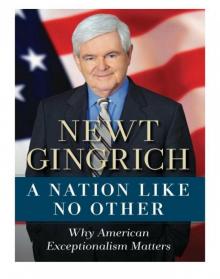 A Nation Like No Other
A Nation Like No Other To Try Men's Souls - George Washington 1
To Try Men's Souls - George Washington 1 Pearl Harbor: A Novel of December 8th
Pearl Harbor: A Novel of December 8th Valley Forge: George Washington and the Crucible of Victory
Valley Forge: George Washington and the Crucible of Victory To Save America
To Save America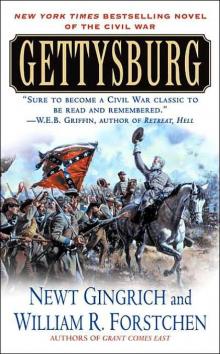 Grant Comes East cw-2
Grant Comes East cw-2 Victory at Yorktown: A Novel
Victory at Yorktown: A Novel Days of Infamy
Days of Infamy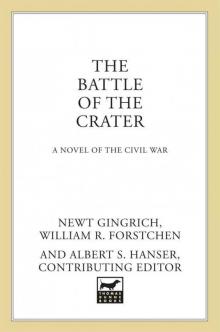 The Battle of the Crater: A Novel (George Washington Series)
The Battle of the Crater: A Novel (George Washington Series)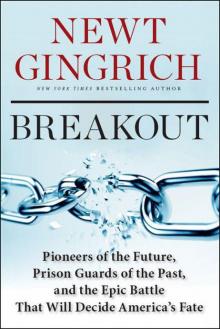 Breakout: Pioneers of the Future, Prison Guards of the Past, and the Epic Battle That Will Decide America's Fate
Breakout: Pioneers of the Future, Prison Guards of the Past, and the Epic Battle That Will Decide America's Fate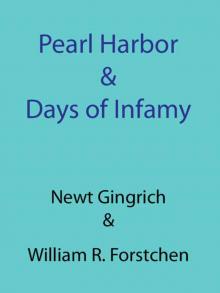 Pearl Harbour and Days of Infamy
Pearl Harbour and Days of Infamy Pearl Harbour - A novel of December 8th
Pearl Harbour - A novel of December 8th Understanding Trump
Understanding Trump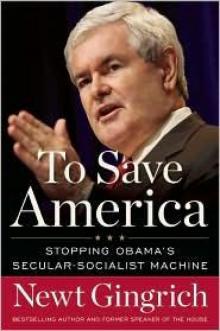 To Save America: Abolishing Obama's Socialist State and Restoring Our Unique American Way
To Save America: Abolishing Obama's Socialist State and Restoring Our Unique American Way